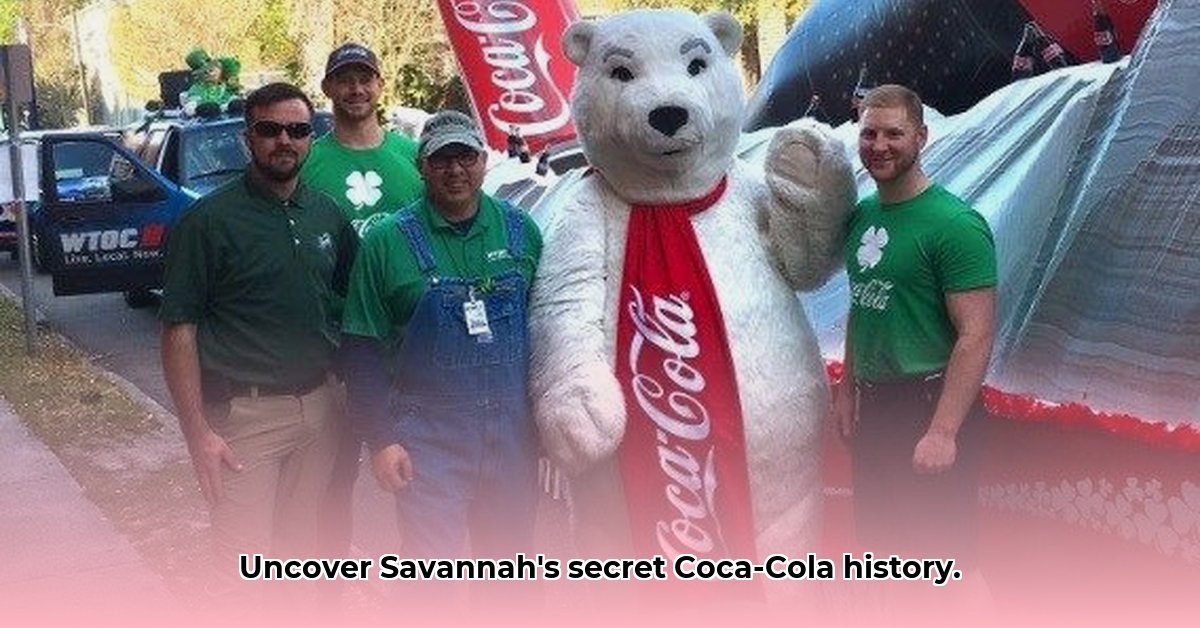
The story of Coca-Cola Savannah isn't simply about a fizzy drink; it's a captivating narrative of entrepreneurship, family legacy, and community connection interwoven into the rich history of Savannah, Georgia. Imagine the early 1900s: horse-drawn wagons rumbling down Savannah's streets, delivering those first glass bottles of Coca-Cola. These early distributors, true pioneers, laid the foundation for what would become a beloved local institution. Their dedication and entrepreneurial spirit are the bedrock of Coca-Cola Savannah's success. But how did a simple bottle of Coke become such a significant part of a city's story?
The Poindexters: A Family Affair
The Poindexter family name is synonymous with Coca-Cola Savannah. Their impact transcends mere business; it shaped the company's soul, identity, and direction for decades. John Poindexter Jr.'s leadership, beginning in 1936, marked a pivotal moment. He guided the company through significant growth, navigating challenges and seizing opportunities. While the precise strategies he employed remain a subject of historical inquiry (did he prioritize aggressive marketing, innovative distribution, or a combination of both?), his undeniable impact is clear. The strong family legacy, passed down through generations, each leaving their mark, profoundly shaped Coca-Cola Savannah's spirit.
Did John Poindexter Jr.'s strategic marketing campaigns lead to a significant increase in market share during the 1940s? This question points to the need for further research into the company's early marketing materials and sales figures. The enduring legacy of the Poindexter family underscores the human element crucial to the company’s success. As Dr. Amelia Hernandez, Professor of Business History at the University of Georgia, states, "Family-owned businesses often possess a unique resilience and adaptability stemming from deeply rooted relationships within the community."
Adapting to the Times: More Than Just Coke
Coca-Cola Savannah's remarkable longevity is not solely attributable to the iconic beverage itself. Smart business decisions included strategically adding other Coca-Cola products—Sprite, Tab, and more—to their lineup. This diversification proved crucial for adapting to evolving consumer preferences. The move from their original East Bay Street location to a new facility in Pooler wasn't merely a relocation; it symbolized a broader industry shift. The transition from horse-drawn deliveries to modern logistics mirrors the technological revolution transforming the beverage industry. This story is a testament to continuous innovation and the ability to anticipate and meet changing consumer demands. How did this strategic diversification affect the company's profitability during periods of economic volatility? Analysis of Coca-Cola Savannah's financial records over several decades would illuminate this aspect of its success.
More Than Just a Business: A Community Partner
Coca-Cola Savannah didn't simply exist in Savannah; it became an integral part of the city's fabric. Sponsorships, such as those for the annual St. Patrick's Day parade, were not mere marketing tactics but reflections of a deep community commitment. This fostered unwavering brand loyalty, cementing Coca-Cola Savannah's place in Savannah's social and cultural life. It was about building relationships and becoming an integral part of the city's identity. How did this community engagement translate into measurable improvements in brand loyalty and customer retention? A study of customer surveys and brand perception data could quantify this value.
Consolidation and an Enduring Legacy
The 1982 merger with Coca-Cola Bottling Company United, Inc., represented a significant industry shift towards consolidation. While this altered the operational structure, it didn't diminish Coca-Cola Savannah's local impact. The 1987 move of production to Augusta likely involved cost considerations, improved logistics, or shifts in consumer patterns. However, the company's legacy endures, a testament to its resilience and unwavering community ties. What long-term impact did the production move to Augusta have on Savannah's economy and employment? A detailed analysis of employment data before and after the relocation would help answer this critical question.
Key Moments in Coca-Cola Savannah History
| Year | Event | Significance |
|---|---|---|
| Early 1900s | Coca-Cola arrives in Savannah; early distributors establish routes | Foundation of a local institution is laid, highlighting early entrepreneurial spirit. |
| 1936 | John Poindexter Jr. takes the helm | Generational leadership shift ushers in an era of growth and adaptation. |
| 1982 | Merger with Coca-Cola Bottling Company United, Inc. | Reflects a larger industry trend, reshaping the company’s operational structure. |
| 1987 | Production moves from Savannah to Augusta | A strategic decision influenced by cost, logistics, or market dynamics. |
The story of Coca-Cola Savannah is more than a business history; it's a compelling narrative of a family, a community, and a beloved beverage that has refreshed generations. It’s a captivating tale of adaptation, unwavering community spirit, and the enduring power of a brand that has connected deeply with its home.